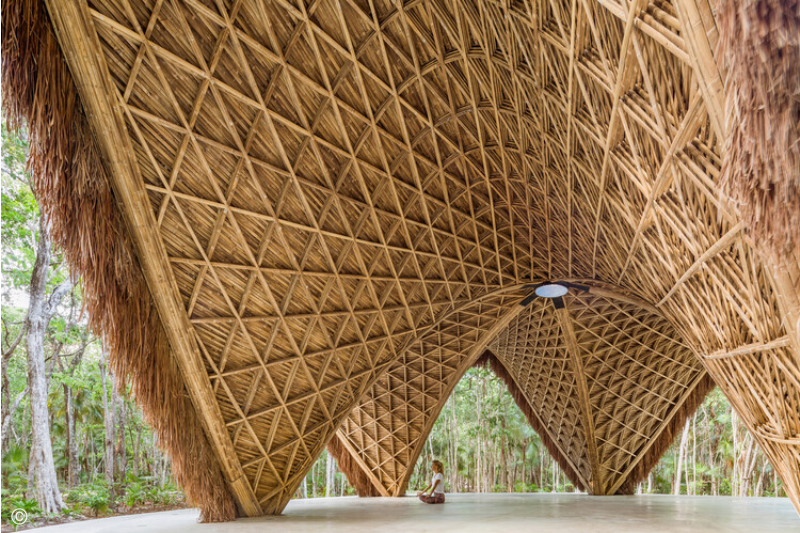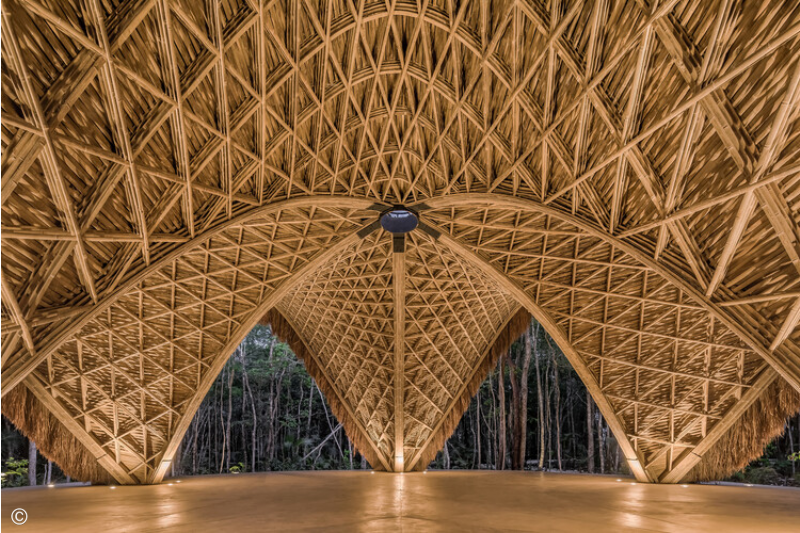 The Luum Temple in Tulum, Mexico is a pioneering example of what happens when traditional wisdom meets modern engineering. It is designed to stand against hurricane winds and significant seismic forces. The structural system has five intersecting hyperbolic paraboloids made of bamboo arches and split bamboo beams.
The Luum Temple in Tulum, Mexico is a pioneering example of what happens when traditional wisdom meets modern engineering. It is designed to stand against hurricane winds and significant seismic forces. The structural system has five intersecting hyperbolic paraboloids made of bamboo arches and split bamboo beams.
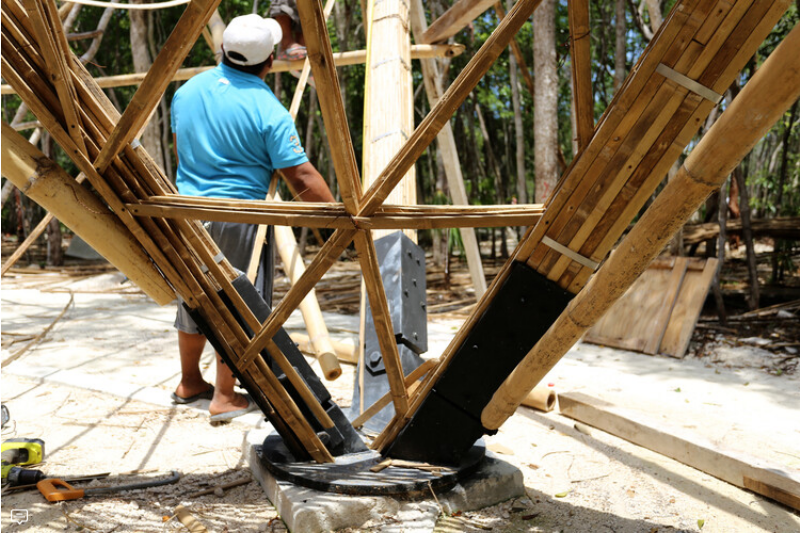 Due to bamboo’s lightweight nature, particular attention must be paid to foundations, cross-bracing and structural stiffness, which are essential to counterbalance its vulnerability to wind forces.
Due to bamboo’s lightweight nature, particular attention must be paid to foundations, cross-bracing and structural stiffness, which are essential to counterbalance its vulnerability to wind forces.
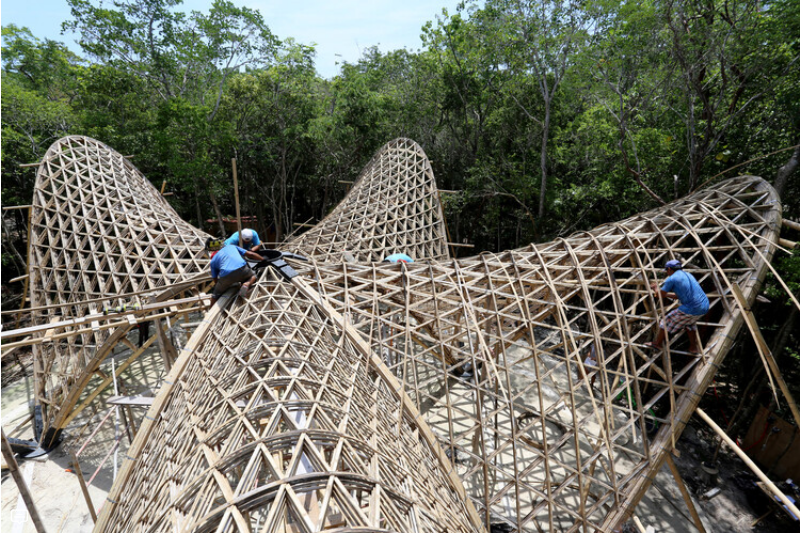 The interconnected roof diaphragm is made of cross-layers of bamboo mats that give the structure impressive resistance to lateral loads. To account for bamboo’s natural flex and movement, the structure incorporates articulated foundations and a central compression ring.
The interconnected roof diaphragm is made of cross-layers of bamboo mats that give the structure impressive resistance to lateral loads. To account for bamboo’s natural flex and movement, the structure incorporates articulated foundations and a central compression ring.
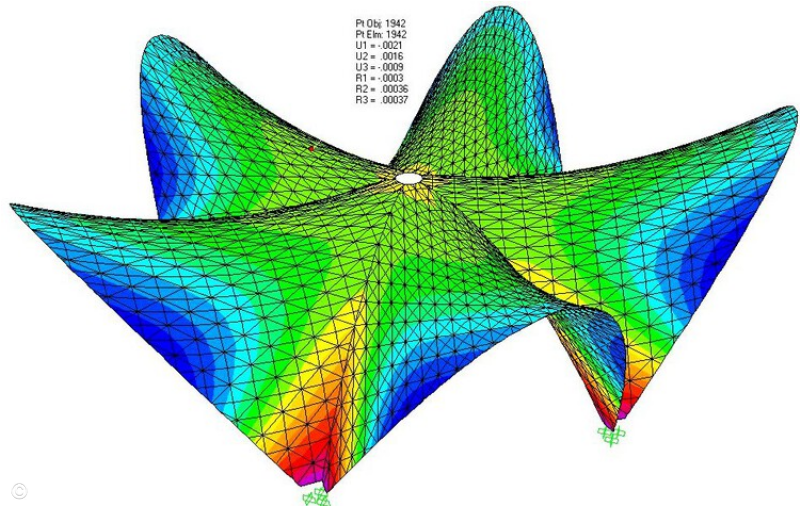 The technical workflow of the project was facilitated by AutoCAD 3D, where the structure’s geometry was modeled. The structure was divided into three main element types to orient the design process:
The technical workflow of the project was facilitated by AutoCAD 3D, where the structure’s geometry was modeled. The structure was divided into three main element types to orient the design process:
- Arches, spanning in the edges of the structure and radially from the center;
- Joists, spanning in layers and connecting the main arches over several layers;
- Roof diaphragm, conformed by the rigid surface resulting from several layers of joist triangulation and split weaving below the roof.
Each component in the structure was interconnected and designed to function cohesively, ensuring resilience against some of nature’s most extreme forces.
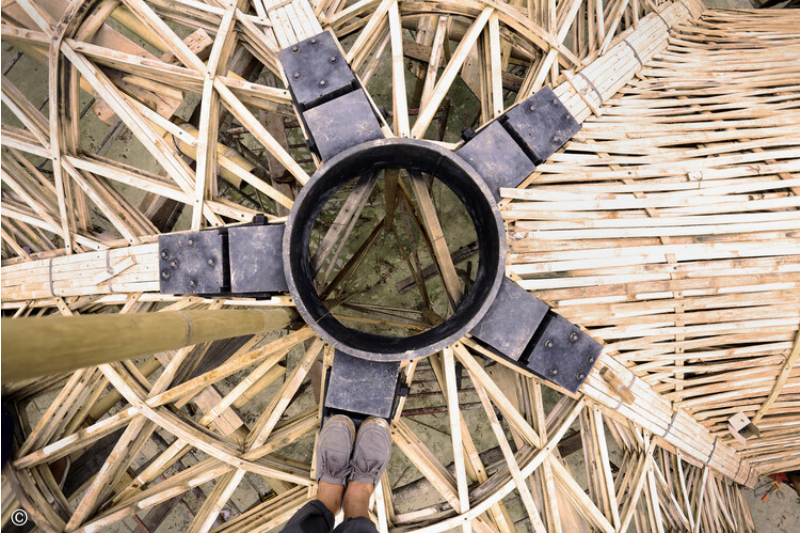 At the uppermost part of the structure, the primary arches converge, interconnected by a central steel compression ring. To ensure the bamboo components can flex and adapt during adverse events like storms or earthquakes without fracturing, the central compression ring incorporates robust hinged connections, as illustrated in the subsequent images.
At the uppermost part of the structure, the primary arches converge, interconnected by a central steel compression ring. To ensure the bamboo components can flex and adapt during adverse events like storms or earthquakes without fracturing, the central compression ring incorporates robust hinged connections, as illustrated in the subsequent images.
 In this project, a detailed analysis was undertaken to determine the mechanical connections at the base. Designed in a hinged manner, similar to the central compression ring, the connections between bamboo arches and the foundation permit rotational movement.
In this project, a detailed analysis was undertaken to determine the mechanical connections at the base. Designed in a hinged manner, similar to the central compression ring, the connections between bamboo arches and the foundation permit rotational movement.
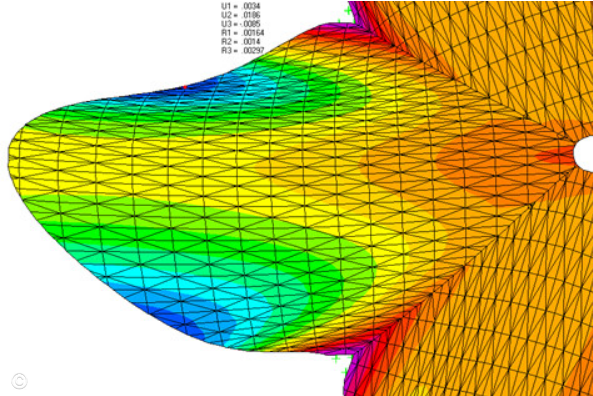 Bamboo isn’t just a rapidly renewable resource —it’s a structural material with the potential to change the landscape of sustainable architecture in the upcoming decades. From its historical roots to its modern-day applications, bamboo proves that when tradition meets innovation, magic happens.
Bamboo isn’t just a rapidly renewable resource —it’s a structural material with the potential to change the landscape of sustainable architecture in the upcoming decades. From its historical roots to its modern-day applications, bamboo proves that when tradition meets innovation, magic happens.
You can read the original article at www.archdaily.com

